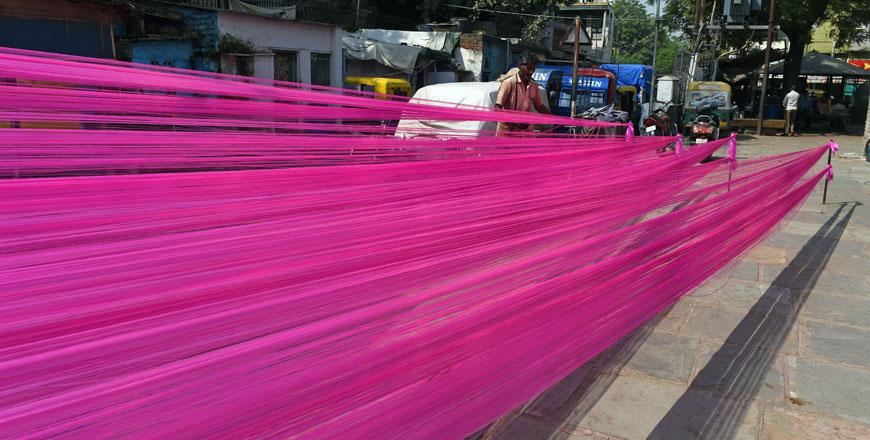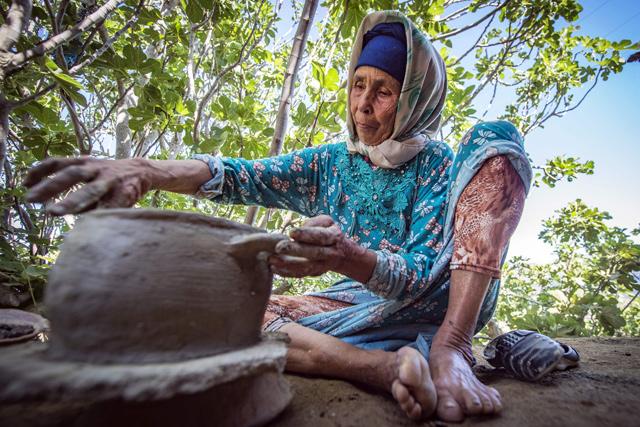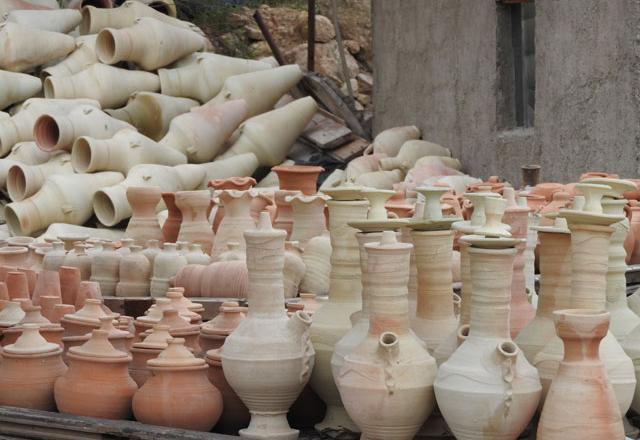You are here
Earth and fire: India pottery village lights up for Diwali
By AFP - Oct 17,2019 - Last updated at Oct 17,2019

A worker dries out coloured polyster/silk yarn from which garlands are made ahead of the Hindu festival of Diwali in Ahmedabad, on Thursday (AFP photo)
NEW DELHI — The narrow lanes of Kumhar Gram are buzzing with activity ahead of Diwali as generations of potters race to create clay decorations for customers across the country — and beyond.
Known as the "Potter's Village", the settlement is home to around 500 families from India's traditional pottery community, who moved to the area half a century ago.
Their skills and artistry have made Kumhar Gram one of the most popular spots for earthenware in the nation but in the run up to Diwali — October and November depending on when it falls — the place transforms.
The streets throng with shoppers buying every type of clay decor from pots and lamps to flower vases and statues of Hindu gods and goddesses.
Diwali, known as the "festival of lights", is a Sanskrit word meaning rows of lighted lamps. The "diya" oil lamps have traditionally been made out of clay and placed around a home during celebrations.
Potter Dinesh Kumar, like many others in the village, learnt about clay from his father and is now passing on the skills to his young children.
"I am teaching them the same way I learnt from my father, he learnt from his father and so on," Kumar tells AFP as he sat at a wheel with many fresh clay pots behind him.
"People come to us from across India and not just Delhi," he added.
In many households, entire families are involved in the steps to make the finished products.
Jagmohan, who only goes by one name, shares the process with his brothers, their wives, his parents and their children.
The 48-year-old sits at the wheel churning different types of pots, lamps and flower vases throughout the day, particularly in weeks leading up to the famed Festival of Lights.
One of his brothers carves designs on them, then the women of the family take the finished works to the roof, where they are left to dry under the sun.
Once dry, they are placed in a rooftop wood oven to bake.
The finished products are loaded onto rickshaws dotted around the congested pathways to be taken to nearby markets and other buyers.
The rickshaw drivers must carry their cargo while navigating the winding alleys filled with stacks of dry clay, finished or unfinished products, and people painting them.
At a market in the village, Sushil Panwar is buying decorations for his home as he gears up for the festivals.
"I have been coming here for a decade now. We take all clay decoration items for our home, like flower pots and earthen lamps from here," Panwar tells AFP.
Besides him, his wife Pratibha holds their purchases which have been carefully wrapped in worn newspapers.
"People come here from all over India around festivals because the [clay] oil lamps here are special," market vendor Kumar Prajapati explains.
He adds: "Whatever you need is available here... which you won't find anywhere else."
By Bhuvan Bagga
Related Articles
OURTZAGH, Maroc — Beautiful handcrafted pottery made by Mama Aicha rarely sells in Morocco anymore, but thanks to social media her ancient t
AMMAN — Dancing, singing, artwork and culinary delicacies displayed the many facets of Indian culture to an audience of 250 Indian nationals
JERASH — As one of the oldest crafts in Jordan, pottery still exists on the side road of Jerash-Amman highway as a family-inherited business
















